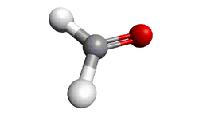|
This is an update of version 1 from Mar. 2000.
The experimental data were summarized by
(1) H. S. P. Müller and F. Lewen,
2017, J. Mol. Spectrosc. 331, 28.
Besides new data betwen 1.37 and 1.5 THz from
that study, transition frequencies were taken mostly
from
(2) H. S. P. Müller, R. Gendriesch, F. Lewen, and G. Winnewisser,
2000, Z. Naturforsch. 55a, 486;
and from
(3) R. Cornet and G. Winnewisser,
1980, J. Mol. Spectrosc. 80, 438.
Additional transition frequencies with 1H hyperfine
splitting were taken from
(4) K. D. Tucker, G. R. Tomasevich, and P. Thaddeus,
1971, Astrophys. J. 169, 429;
and from
(5) K. D. Tucker, G. R. Tomasevich, and P. Thaddeus,
1972, Astrophys. J. 174, 463.
Three more transitions are from
(6) J. C. Chardon, C. Genty, D. Guichon, N. Sungur,
and J. G. Théobald,
1974, Rev. Phys. Appl. 9, 961;
and one more from
(7) D. Dangoisse, E. Willemot, and J. Bellet,
1978, J. Mol. Spectrosc. 71, 414.
The predictions should be accurate enough for all
astronomical observations. Predictions with calculated
uncertainties exceeding 0.2 MHz should be viewed
with caution.
The 1H hyperfine splitting can be resolved for Q-branch
transitions with low values of J and Ka = 1.
Transitions with Ka = 2 do not show hyperfine
splitting while those with Ka = 3 are deemed to be
too high in energy. A separate
hyperfine calculation is provided. The partition function
takes into account the hyperfine splitting.
At low temperatures, it may be necessary to discern between
ortho-H2C18O and
para-H2C18O.
The ortho states are described by Ka odd,
the para states by Ka even.
The nuclear spin-weights are 3 and 1 for
ortho-H2C18O
and para-H2C18O, respectively.
The JKaKc = 111
is the lowest ortho state. It is 10.4890 cm–1
above ground.
The dipole moment was assumed to be the same as for the main isotopic
species, see e030501.cat.
|
